Folding Propellers vs. Feathering Propellers
When deciding between a folding propeller and a feathering propeller, it might be difficult to determine which type of propeller to go with.So,...
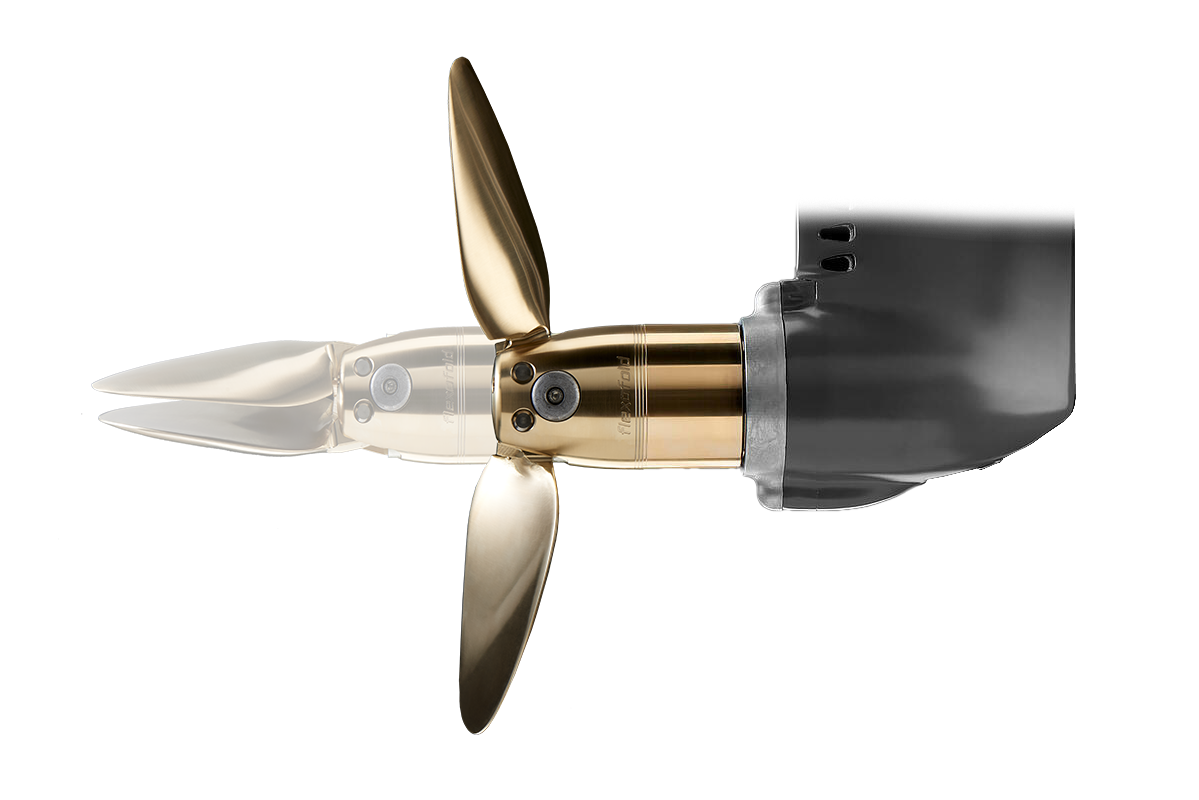
Folding props or not – that’s the big question!
At Flexofold we will always choose a folding propeller – and there are many good reasons why.
There are many great advantages when it comes to folding propellers, from efficiency to comfort. Are you in doubt whether you should get a folding propeller yourself?
Let Flexofold guide you!
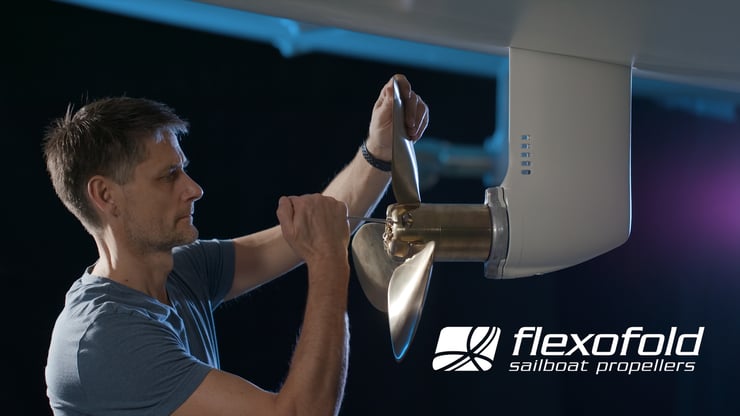
You can enjoy the benefits of a folding propeller in both its active and passive form. On a folding propeller the blades fold together contrary a fixed propeller where the blades stay out all the time.
It’s the type of propeller that provides the least amount of drag under sail compared to other propellers, as the blades fold together. Even so, you won’t compromise the engine performance. You will experience high efficiency, and it all works by the laws of nature.
A folding prop works via the centrifugal force, and this is where the laws of nature come into play.
In its active form – that being when the engine is on, the engine rotates the hub. The blades are now being forced open by the centrifugal force. This already happens at low RPMs. The centrifugal force ensures that the blades remain open, while the engine is running. It is very simple mechanics based on physical laws.
Also in reversed thrust, it works via the centrifugal force. When shifting into reverse, you would think that the water pressure would fold the blades together. Of course, you can’t avoid the water pressure, but it is not at all as strong as the centrifugal force when the propeller spins as fast as it does. The centrifugal force is so strong that it exceeds the water pressure that would otherwise try to close the blades together in reverse. Therefore, a folding propeller can reverse without difficulty.
In its passive form – when under sail, the water pressure will fold the blades together, and the propeller will get a more streamlined shape. Now that the engine is no longer on, there’s no centrifugal force to keep the blades folded out. This is where the laws of nature comes into play again, as the water pressure folds the blades in together.
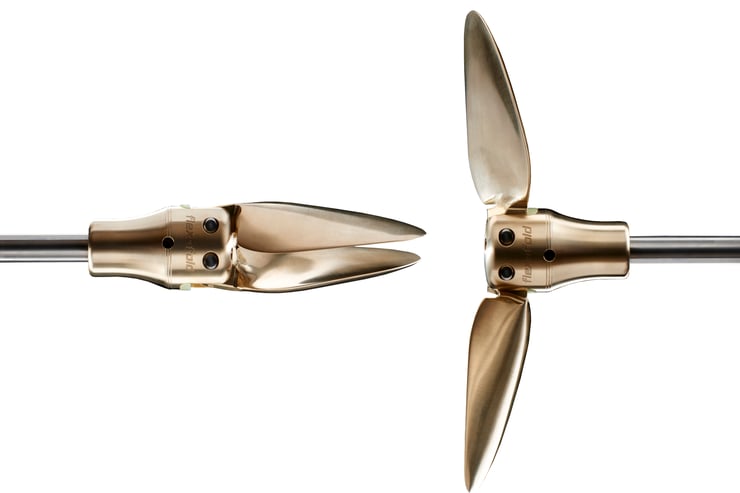
A folding propeller is made from a very simple construction. It is so simple, that almost nothing can go wrong or break. There are no small gears that need to be lubricated as seen with other types of propellers.
This is an important detail, as the propeller is an element installed under the boat. This makes it a bit trickier to keep a regular eye on it, and not everyone jumps into the water to fix or make changes on the propeller. So, there’s a certain sense of security in knowing that the simple construction and function of the prop make it almost impossible for anything to go wrong.
With many other types of propellers, you need to haul out your boat to fix anything with the prop. That isn’t necessary if you have a Flexofold folding propeller. Due to the simple construction and screws with Loctite®, you can actually mount the propeller under water.
The only thing that can actually go wrong, is if the propeller is mounted incorrectly. This will be the case no matter which type of propeller you’re dealing with. Due to its simple construction, it is so easy to mount that even a person without any sailing experience can do it.
Simple constructions call for good materials. At Flexofold we have always produced our folding propellers in solid materials. Our props are crafted from a high-quality cobber alloy, which is widely regarded as the best material for propellers due to its superior strength and durability.
No matter what type of sailor you are, a folding propeller can be the right choice for you. You’ll enjoy the benefits of a folding propeller both when the engine is on and when under sail.
In particular, it has 5 advantages, that you should notice:
1. Reduced drag and higher speed
2. It increases comfort on board
3. It’s driven by the laws of nature
4. Increased safety
5. Better sailing performance
All in all, this means that you’ll experience a noticeably higher degree of comfort with a folding propeller on your sailboat.
With a folding propeller, you get minimum drag, as the blades are folded together, unlike a fixed propeller, where the blades are constantly out. The propeller gets a smaller surface area being dragged through the water. Because the blades on a Flexofold folding propeller twist, the water flow can wind around the surface and in between the folded blades, rather than being slowed down as it would be with a fixed propeller. Our customers find that they suddenly sail faster after getting a Flexofold folding propeller. This is not entirely unfounded. Our folding propellers will increase your sailing speed with 0.5 to 1.5 knots.
The low drag makes it possible to sail in very light winds. It can be annoying having to start the engine when there’s not enough wind to move the boat. If you have a fixed propeller, you need a certain amount of wind to move the boat forward. The wind must be strong enough to pull the fixed propeller through the water because the propeller creates a great amount of drag. With a folding propeller it doesn’t take much wind to keep pressure in the sails to move forward. This gives you more hours under sail. If you have a fixed propeller, you’ll have to turn on your engine earlier than someone with a folding propeller.
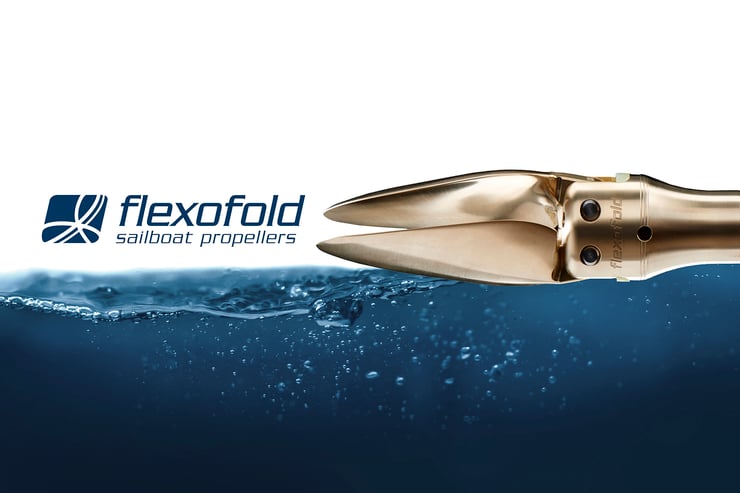
Due to its shape and hydrodynamic design, a Flexofold folding prop has superior power sailing forward, in reversed thrust and stop during sailing. In a test, a 63-foot Hanse went from a whopping 8 knots to a stop in just one boat length.
You’ll experience increased comfort on board being able to enjoy the lapping of the water. With a folding propeller there is no noise when under sail, unlike if you have a fixed propeller. A fixed propeller creates drag, but if you leave the propeller in neutral so that it can rotate with the help of the water pressure, you can reduce the drag. However, this has the effect of putting wear on the bearings etc. and you’ll hear a growling kind of sound from the shaft and propeller rotating. With a folding propeller, it’s silent when sailing with the sails up due to the low drag. There’s more comfort in the silence of the sea, especially if you enjoy getting away from the noise of everyday life and disappearing into the sounds of nature.
Since folding propellers aren’t mechanically driven, but operates via natural centrifugal force and water flow, it’s also a green solution. You therefore utilize the Earth’s own resources when choosing a folding propeller for your sailboat. There’s not a lot of technology you have to learn, it just works because it’s all about the laws of physics. The laws of nature ensures that your prop is both active and passive. The centrifugal force forces the blades open, as the engine is turned on and the water pressure folds them back in, as soon as the engine is turned off. It’s simple and super easy for you as a sailor.

A folding propeller makes the sailing experience more safe.
Since the blades are folded under sail, the propeller doesn’t catch old fishing lines, crab pots and marine debris in the sea.
Unfortunately, there’s a lot of marine debris in the oceans, and it can be fatal if you get old lines or fishing nets tangled in your propeller. It can mean that you lose the ability to use your engine and, worst case scenario, lose your ability to steer. Especially in rough weather, this can be an important factor.
Old fishing lines and nets that have come loose can be a minefield to navigate through, if you have a fixed propeller. It can easily become tangled up in them.
With a Flexofold folding propeller you get more power. In its active form more horsepower is converted into thrust. You can have the biggest and best engine, but if you don’t have a propeller that manages to transfer the power into the water, the engine is useless. Everyone who sails can be caught off guard by bad weather, and it’s comforting to know and have the confidence that if needed, you have enough propulsive power to safely steer your boat to the marina. And once again, you don’t have to worry about picking up debris from the sea, that could halt the engine.
You will experience a better sailing performance with a folding propeller.
A classic example is when you have to tack to get to your destination. With a fixed propeller, you lose momentum when tacking. If the wind pressure goes out of the sails and you have the drag from a fixed propeller, you lose speed. When you want to tack, you first need to build up pressure in the sails again, then you have to build up acceleration and get the boat up to speed, before you can tack again. You lose speed when you have the drag from a fixed propeller, and it therefore takes you longer to get to your destination.
With a Flexofold folding prop you have almost eliminated the drag from the propeller, which allows you to maintain a certain amount of speed even when tacking. The boat maintains its speed, so if you’re quick at moving your sails, you can continue without losing much speed. You avoid coming to a complete stop, only to have to build up speed again.
A folding propeller therefore provides better sailing performance. You can sail closer to the wind and you can navigate more precisely towards your destination when tacking.
Are you still unsure whether a folding propeller is suitable for you and if it will meet your needs?
In short, a folding propeller is suitable for anyone who has a sailboat with an inboard engine. Depending on your preferences, everyone can enjoy the benefits of a folding propeller.
Folding propellers are suitable for both racing sailors, family sailors, and even for those who like to trim their sails a little extra to see if they can sail faster than the other boats in the area.
For a relatively small amount of money you can get much more out of your expensive boat. In many cases, it’ll be much harder to find an alternative investment where you get better value than you get with a folding propeller.
If you have decent sails but are thinking of changing them, you can get much better sailing performance and many more benefits by switching to a folding propeller, for far less money. Unless your sails are in tatters, of course, they should be replaced. However, investing in a folding propeller gives you more value compared to investing in new sails for 15,000-22,000$. For most sailors with a fixed propeller, investing in a folding propeller will give the best value for money.
At Flexofold one of our areas of expertise lies in guiding you towards the propeller, that is best suited for your boat. You don't have to worry about whether you need a 2-, 3-, or 4-blade folding propeller. All you have to do, is provide us with the correct information about your boat. Based on this information, we will calculate which propeller is best suited for your motor and gear ratio. If 2 propellers would fit e.g. a 2- and 3- blade propeller, we’ll consult with you to ensure that you receive the ideal propeller to meet your personal preferences.
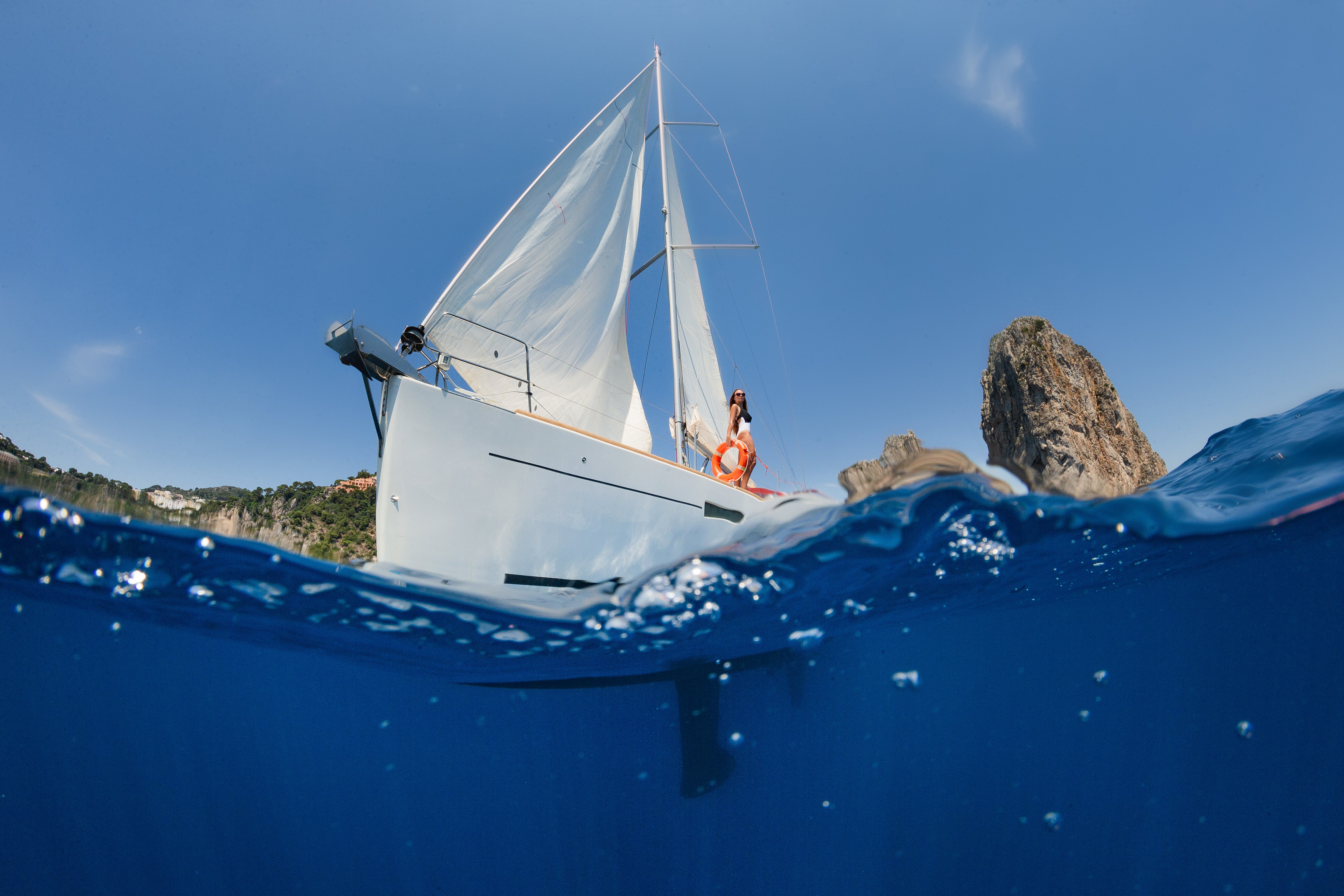
When deciding between a folding propeller and a feathering propeller, it might be difficult to determine which type of propeller to go with.So,...
.png)
A folding propeller is not a new invention. It is actually more than 100 years old, and even though the technical aspects and the underlying idea are...

Whether you, as a boat owner, should choose a 2-blade, a 3-blade or a 4-blade folding propeller is a question that we have been asked a lot here at...